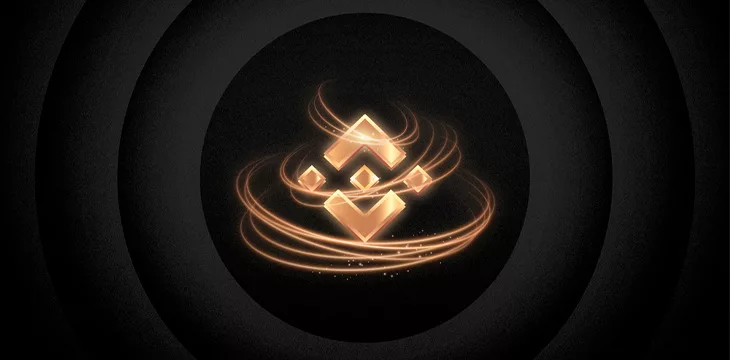The new First Digital USD (FDUSD) stablecoin’s debut was anything but auspicious, while cryptic comments by Binance’s founder about stablecoin stability have left the ‘crypto’ sector bracing for impact.
On Wednesday, July 26, the Hong Kong-based First Digital Group celebrated the debut and listing of its new FDUSD stablecoin on Binance, the world’s largest digital asset exchange by trading volume. But the U.S. dollar-backed FDUSD appears to have tripped down the red carpet.
Within moments of FDUSD’s debut, Binance abruptly announced that it had “postponed” the listing due to “FDUSD Pairs’ liquidity providers experiencing technical issues.” Binance said it decided to “halt trading … and cancel all pending orders on FDUSD, to ensure utmost protection for our users.” Binance pledged to restart FDUSD trading later that same day.
At the time of its scheduled debut, FDUSD was only transactable on Ethereum and the Binance Smart Chain (BSC aka BNB Smart Chain). Only a tiny sliver of the initial 10.11 million tokens was being held outside Binance wallet addresses.
Binance offers a ‘zero maker fee’ promotion for customers trading FDUSD for either Binance’s in-house BNB token, the formerly Binance-backed BUSD stablecoin, or Tether (USDT). Binance also added FDUSD to its Binance Convert feature, allowing users to trade FDUSD for other tokens, including BTC and ETH, plus various fiat currencies.
When it first announced its stablecoin plans, First Digital claimed it was in discussions with all major exchanges regarding possible listings, but Binance founder Changpeng ‘CZ’ Zhao is so far the only one to take the FDUSD bait.
First Digital Group claims FDUSD—issued by a First Digital subsidiary called FD121 Limited—is “1:1 backed with high-quality cash and cash equivalent reserves, which are held in segregated accounts in regulated financial institutions and are monitored and audited by independent third parties.” The statement went on to qualify that “FDUSD is intended to be redeemable 1:1 for equal value in U.S. dollars.”
First Digital Group includes First Digital Trust, a Hong Kong-registered custodian whose CEO Vincent Chok declared that FDUSD “offers a transparent, reliable and trusted alternative that provides the predictability corporates and investors are demanding.”
Well, maybe. First Digital is/was a major custodian of the assets (allegedly) backing the TUSD stablecoin. The custodial choices of TrueUSD—the company behind TUSD—haven’t always been inspiring, as they included not only the recently insolvent Nevada-based Prime Trust but also Silvergate Bank and Signature Bank. The latter two collapsed spectacularly earlier this year as ‘crypto winter’ froze their assets off.
TrueUSD stopped sharing its custodial numeric allocations shortly after it was acquired by Techteryx, a murky Asian entity that insists it totally isn’t a beard for Tron founder Justin Sun, just as the Huobi exchange insists equally loudly that it, too, has nothing to do with Sun.
By late Wednesday, CoinGecko data showed more than three-quarters of all FDUSD trading volume on Binance was for USDT, while the FDUSD-BNB pair accounted for a mere 1%. So, trading one stablecoin for another…Bullish?
Stumblecoins
The stablecoin sector has had a tumultuous year. TUSD more than quadrupled its cap to over $3.1 billion, although that’s since dropped back slightly to $2.8 billion. Like FDUSD, TUSD was extended ‘zero trading fee’ incentives after Binance was forcibly ousted from its BUSD partnership with New York-based Paxos Trust.
The New York Attorney General forced the pair to separate this spring after concluding that Binance was transacting in a version of BUSD it called Binance-Peg BUSD on its own BSC network and that on multiple occasions, there were more than a billion B-Peg BUSD circulating that weren’t backed by any reserve assets. From a peak of $23.5 billion last November, less than $3.8 billion BUSD is currently left in the wild.
Before this decoupling, CZ had begun forcibly converting Binance customers’ USDC to BUSD in September 2022. This was largely viewed as an anti-competitive push to diminish USDC, which was beginning to challenge Tether’s market share dominance at the time.
USDC is run by a consortium involving Circle and U.S. exchange Coinbase (NASDAQ: COIN). USDC has since seen its market cap plummet by more than one-half from its mid-2022 peak of over $56 billion to its current sum of $26.5 billion. Over that same period, market leader Tether has added over $25 billion to its cap, which currently sits at nearly $84 billion.
Even before the collapse of rival exchange FTX, Binance was among the largest recipients of Tether, despite CZ likening Tether to “a black box” for its refusal to submit to an audit of its billions of alleged reserves. CZ also expressed doubts that Tether would have the capacity to convert all USDT on a 1:1 basis with the U.S. dollar should push come to shove.
And that pushing and shoving may be just around the corner.
There’s some lovely filth down here
Unlike Tether’s black box, CZ has been likened to an open book, at least in terms of his willingness to bend/break the rules to pad Binance’s bottom line.
But with Binance increasingly unwelcome in markets around the world—Binance withdrew its German license application this week—and trad-fi partners looking to avoid guilty-by-association, there’s mounting suspicion that Binance’s efforts to promote certain stablecoins over others are intended to create a walled garden in which actual dollars flow in but rarely need to flow out.
The day before FDUSD’s launch, a cryptic tweet from CZ claimed that “‘stable’ coins… are not always stable.” CZ followed up on Wednesday by tweeting that the BTC token “is more stable than stable coins now…”
For all we know, CZ is just messing with peoples’ heads, but there are several external forces here that may be coming to a head.
For one, the U.S. Department of Justice is prepping serious criminal charges against both Binance and CZ and the fact that disgraced FTX founder Sam Bankman-Fried (SBF) was recently spotted hanging around the DoJ’s New York offices—nearly a week before a hastily scheduled court appearance on his own criminal case—adds more fuel to that fire.
CZ was an original investor in FTX before SBF forcibly bought out CZ’s stake in mid-2021. At the time, SBF was trying to craft a regulatory-friendly image around his own criminal empire, and CZ’s criminal rep wasn’t helping. But with CZ having administered the coup de grace that led to FTX’s demise, SBF might be about to use his intimate understanding of Binance’s operations for a slice of best-served cold revenge.
If SBF is getting ready to flip on CZ to save his own skin, that could leave CZ with only one card left to play in his own negotiations with the DoJ: flipping on Tether. There’s no honor among these thieves, and with the DoJ already having a variety of potential criminal charges it could file against Tether—and SBF could potentially fink on both Binance and Tether—CZ better bring the goods and bring ‘em quick.
If CZ’s not asking his lawyers to at least explore his options in this area, perhaps ‘unstable’ isn’t an attribute limited to tokens.
Follow CoinGeek’s Crypto Crime Cartel series, which delves into the stream of groups—from BitMEX to Binance, Bitcoin.com, Blockstream, ShapeShift, Coinbase, Ripple,
Ethereum, FTX and Tether—who have co-opted the digital asset revolution and turned the industry into a minefield for naïve (and even experienced) players in the market.
New to blockchain? Check out CoinGeek’s Blockchain for Beginners section, the ultimate resource guide to learn more about blockchain technology.








